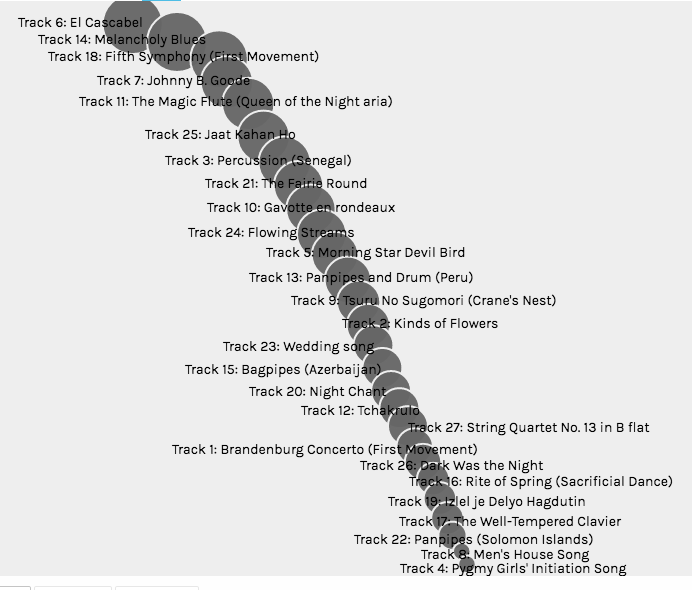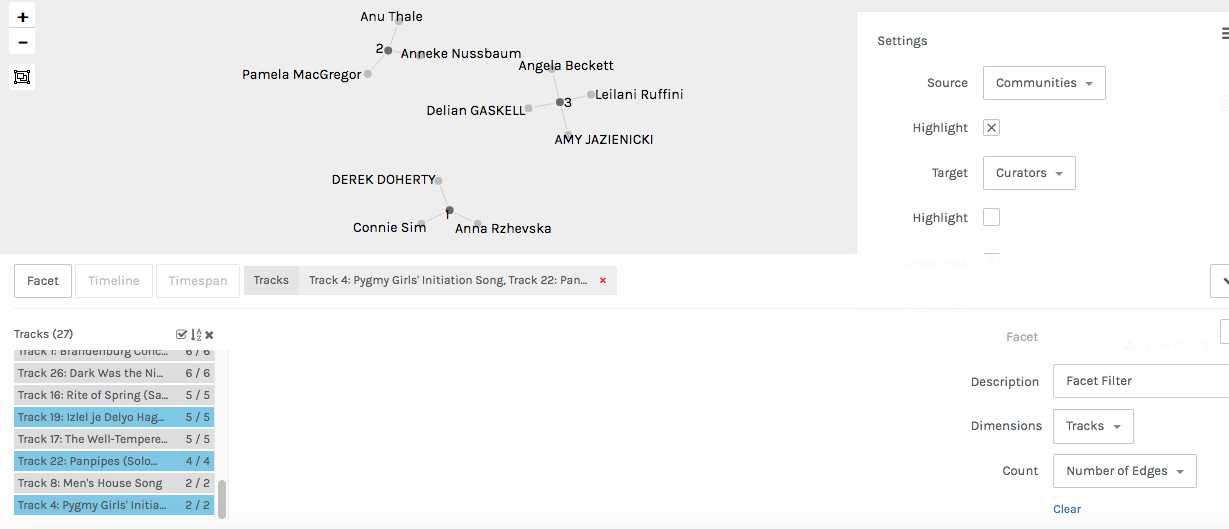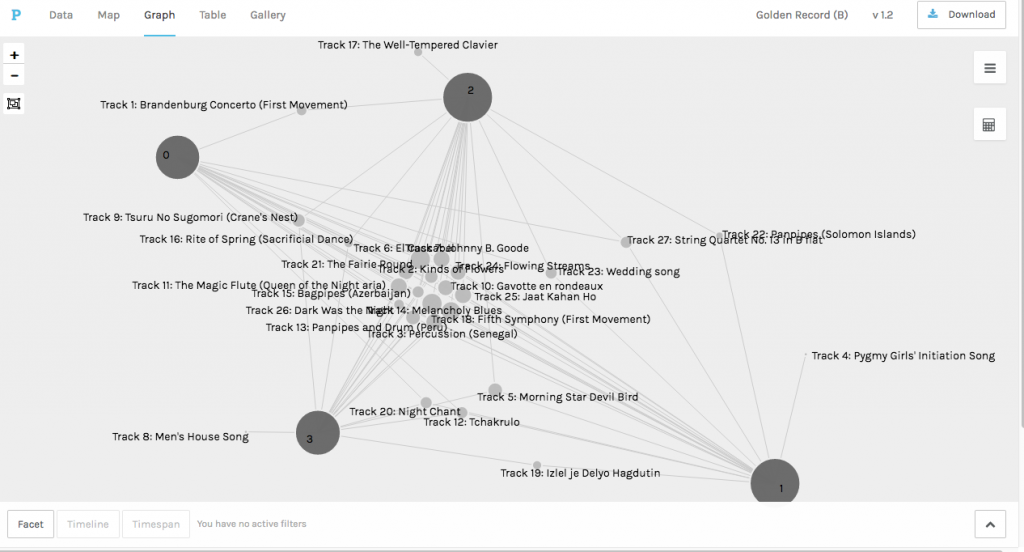When presented with the organization of curators into groups based on similarity of track choices, it is easy to at first come to quick assumptions about both how the members within each community must share similar criteria for evaluating their track selection choices, and how each community must have broadly identifiable differences between them in terms of which tracks were chosen.
A closer look at the data shows that, broadly speaking, the four groups created by organizing the curators in section B did not vary from each other as much as one might assume in terms of overall track selection. To put it another way, all four groups had much more in common than what was different between them. Of the 27 tracks available to choose from, the 14 most commonly-selected tracks overall were common to all 4 groups. Every curator had at least 3 (more often 5-7) of the overall “top-10” tracks on their list. Interestingly, no one person’s list matched the overall “most popular” list, with the closest match being 8 of the 10.

Close-up of the 14 tracks that are represented in all 4 communities, with the larger circles representing the top-10 most commonly-chosen tracks overall.

Comparative visualization of the “popularity” of all tracks, in descending order. The large circle for El Cascabel represents its “popularity” by being included on 14 curators’ lists. The least-selected tracks (Men’s House Song & Pygmy Girls’ Initiation Song) were selected by just 2 curators each.
With the the most popularly chosen tracks being commonly included in the selections of multiple curators in each community, the most obvious distinctions that can be identified in distinguishing one community from another rests with the differences between the least “popular” tracks that were selected by curators. Examining the least commonly-selected tracks reveals clear organizational trends, where the grouping-together of curators who chose these tracks are highly consistent, with few to no outliers belonging to other groups. The fact that the identity of each community seems to be determined primarily by which of the uniquely unpopular or “fringe” choices are held by its members is particularly interesting to ponder, especially if one re-imagines these patterns being reflected through a political lens (with policies taking the place of song tracks). The communities seem to be organized according to what makes them different from members of the other groups rather than what the members within a community have in common with each other.

Exploring the patterns of the least-selected tracks. All curators who included Track 4 are in Group 1. All curators who included track 22 are in group 2, except for one outlier in group 1. All curators who chose track 19 are in group 3. (not shown: all curators who chose track 17 are in group 2)
This organization is of course blind to the reasons why certain tracks were included or excluded by curators. Looking at community 0, which I am a part of, it is tempting to read into some the different choices made by my group members and to assume that their inclusion of tracks that I was also very tempted to select is due to shared or similar criteria of evaluation. However, some of their other choices suggest an approach to track selection that was done based on a different weighing of criteria than what I used. One of my major foci was maximizing diversity of musical traditions/origins from a geographical&cultural perspective, and so I felt it was important to only include one example of what I consider to be “Western European Art Music” in my selection (proportionally over-represented in the original 27-track list) in order to maintain space for greater cultural diversity. In addition to Beethoven’s 5th Symphony, which all of us had in common, every other member of my community also elected to include at least one additional piece of what I would consider to be “Western European Art Music”. In this sense, I was an outlier in my own group in terms of either how I was choosing to organize and compare the qualities of different tracks (I was, after all, lumping together a number of pieces that are very distinct in terms of style, instrumentation, time period, and location into a single simplistic category) or how I was choosing to weigh the importance of (broadly-defined) cultural/geographical origin against other valid criteria such as diversity of musical elements, diversity of instrumentation, and overall global popularity/recognizability.
In this data, the “obvious” choices and the “hard” choices become nearly impossible to infer for any one curator’s track selection, and the possible reasons behind their choices become further obscured when the grouping of communities suggests more commonality within the groups (and differences between the groups) than may actually exist. It is very possible that my reasons for making the choices I did might be better reflected by a different community whose members’ choices only differed slightly from my own in terms of which of the “least popular” tracks they elected to include.
